Opinion & Analysis
Stronger iron lofts don’t always create more distance
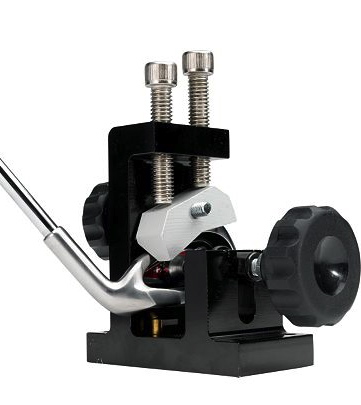
The most common complaint I hear from golfers looking for new irons is that all the lofts are “jacked strong.” If someone is playing an iron set, for instance, from the late 1990’s or earlier they will most likely find their irons to be 2-to-3 degrees weaker than today’s game-improvement irons, and even some players irons. So the assumption is that the loft alone is what is creating more distance with the new irons. But there is a lot more to it than that.
In the fittings I do on a golf radar, I see all types of swings and golfers of different ability levels, so the variances in fittings can be dramatic. But the end result for an iron fitting is the same: I want the customer to leave with a set of irons that produce the best possible launch conditions for them. So it doesn’t matter to me what loft a golfer’s 6 iron is, as long as that loft allows a golfer to launch and spin the ball in a way that’s ideal for their swing.
It is common for the golfers I fit to hit todays irons, which average about 2 degrees less loft per club, as high as their current set (if not higher). The reason this happens has to do with an iron’s center of gravity (COG), because when you lower an iron’s COG you add a lot of potential height to a golf shot.
Let’s assume that the launch angle with a modern-lofted set of irons is ideal. As long as the spin rate is acceptable, the new irons, because of their lower center of gravity, are going to produce more speed off the face (due to the lower loft and lower COG) and more distance. But they will still land on the green as soft as an older set of irons (if not softer). Add in the added forgiveness of modern irons, and you have a winning combination.
Another reason why stronger lofts don’t always mean more distance is something I do frequently to help golfers hit the ball farther — weaken lofts. It is common for a golfer with a swing speed of 70-to-80 mph or less to hit the ball with a lower trajectory than what is considered ideal. Fitters have to find some way to raise their ball flight, because those golfers lack the speed necessary to get the best results from many modern iron heads.
Step 1 for those golfers is to increase ball speed. More ball speed helps them keep the ball in the air longer, which raises their maximum height. If the added ball speed of modern irons is not enough to achieve an ideal landing angle, I have to add loft. That’s why I custom order iron sets with lofts that are 1-to-2 degrees weaker than standard about 40 percent of the time.
By adding loft, those golfers achieve more ideal launch conditions, which means they carry shots farther and stop the ball faster on the green. Think about how much this could help golfers from the rough as well. Golfers can see their spin rate drop thousands of RPM’s from the rough (depending on the rough and type of lie), so being able to keep their shots in the air with enough spin to stop the ball on the green can be a huge part of helping them shoot lower scores.
It is hard for some golfers to understand how irons with more loft can help them hit the ball farther, and this is understandable. But when I show them the results on golf radar, which can be as much as 5-to-10 yards more carry distance, they start to get it.
Golfers should liken their iron fittings to that of a driver. They won’t question a fitter who recommends that they switch to a 10.5-degree driver instead of an 8.5 or 9.5, because those are established as acceptable driver lofts. But bending an iron weak is not as well understood by many golfers, so they are more hesitant.
Golfers can talk about shafts until they are blue in the face, and different shafts will make a difference in control, feel and sometimes launch and spin. But loft is a much more important factor in fitting.
That’s why I recommend that golfers get fit for irons on golf radar by a certified fitter who understands how loft and COG work together in iron design. You’ll be amazed at the difference a properly fit set of irons can make to your game.
Opinion & Analysis
The 2 primary challenges golf equipment companies face

As the editor-in-chief of this website and an observer of the GolfWRX forums and other online golf equipment discourse for over a decade, I’m pretty well attuned to the grunts and grumbles of a significant portion of the golf equipment purchasing spectrum. And before you accuse me of lording above all in some digital ivory tower, I’d like to offer that I worked at golf courses (public and private) for years prior to picking up my pen, so I’m well-versed in the non-degenerate golf equipment consumers out there. I touched (green)grass (retail)!
Complaints about the ills of and related to the OEMs usually follow some version of: Product cycles are too short for real innovation, tour equipment isn’t the same as retail (which is largely not true, by the way), too much is invested in marketing and not enough in R&D, top staffer X hasn’t even put the new driver in play, so it’s obviously not superior to the previous generation, prices are too high, and on and on.
Without digging into the merits of any of these claims, which I believe are mostly red herrings, I’d like to bring into view of our rangefinder what I believe to be the two primary difficulties golf equipment companies face.
One: As Terry Koehler, back when he was the CEO of Ben Hogan, told me at the time of the Ft Worth irons launch, if you can’t regularly hit the golf ball in a coin-sized area in the middle of the face, there’s not a ton that iron technology can do for you. Now, this is less true now with respect to irons than when he said it, and is less and less true by degrees as the clubs get larger (utilities, fairways, hybrids, drivers), but there remains a great deal of golf equipment truth in that statement. Think about it — which is to say, in TL;DR fashion, get lessons from a qualified instructor who will teach you about the fundamentals of repeatable impact and how the golf swing works, not just offer band-aid fixes. If you can’t repeatably deliver the golf club to the golf ball in something resembling the manner it was designed for, how can you expect to be getting the most out of the club — put another way, the maximum value from your investment?
Similarly, game improvement equipment can only improve your game if you game it. In other words, get fit for the clubs you ought to be playing rather than filling the bag with the ones you wish you could hit or used to be able to hit. Of course, don’t do this if you don’t care about performance and just want to hit a forged blade while playing off an 18 handicap. That’s absolutely fine. There were plenty of members in clubs back in the day playing Hogan Apex or Mizuno MP-32 irons who had no business doing so from a ballstriking standpoint, but they enjoyed their look, feel, and complementary qualities to their Gatsby hats and cashmere sweaters. Do what brings you a measure of joy in this maddening game.
Now, the second issue. This is not a plea for non-conforming equipment; rather, it is a statement of fact. USGA/R&A limits on every facet of golf equipment are detrimental to golf equipment manufacturers. Sure, you know this, but do you think about it as it applies to almost every element of equipment? A 500cc driver would be inherently more forgiving than a 460cc, as one with a COR measurement in excess of 0.83. 50-inch shafts. Box grooves. And on and on.
Would fewer regulations be objectively bad for the game? Would this erode its soul? Fortunately, that’s beside the point of this exercise, which is merely to point out the facts. The fact, in this case, is that equipment restrictions and regulations are the slaughterbench of an abundance of innovation in the golf equipment space. Is this for the best? Well, now I’ve asked the question twice and might as well give a partial response, I guess my answer to that would be, “It depends on what type of golf you’re playing and who you’re playing it with.”
For my part, I don’t mind embarrassing myself with vintage blades and persimmons chasing after the quasi-spiritual elevation of a well-struck shot, but that’s just me. Plenty of folks don’t give a damn if their grooves are conforming. Plenty of folks think the folks in Liberty Corner ought to add a prison to the museum for such offences. And those are just a few of the considerations for the amateur game — which doesn’t get inside the gallery ropes of the pro game…
Different strokes in the game of golf, in my humble opinion.
Anyway, I believe equipment company engineers are genuinely trying to build better equipment year over year. The marketing departments are trying to find ways to make this equipment appeal to the broadest segment of the golf market possible. All of this against (1) the backdrop of — at least for now — firm product cycles. And golfers who, with their ~15 average handicap (men), for the most part, are not striping the golf ball like Tiger in his prime and seem to have less and less time year over year to practice and improve. (2) Regulations that massively restrict what they’re able to do…
That’s the landscape as I see it and the real headwinds for golf equipment companies. No doubt, there’s more I haven’t considered, but I think the previous is a better — and better faith — point of departure when formulating any serious commentary on the golf equipment world than some of the more cynical and conspiratorial takes I hear.
Agree? Disagree? Think I’m worthy of an Adam Hadwin-esque security guard tackle? Let me know in the comments.
@golfoncbs The infamous Adam Hadwin tackle ? #golf #fyp #canada #pgatour #adamhadwin ? Ghibli-style nostalgic waltz – MaSssuguMusic
Podcasts
Fore Love of Golf: Introducing a new club concept

Episode #16 brings us Cliff McKinney. Cliff is the founder of Old Charlie Golf Club, a new club, and concept, to be built in the Florida panhandle. The model is quite interesting and aims to make great, private golf more affordable. We hope you enjoy the show!
Opinion & Analysis
On Scottie Scheffler wondering ‘What’s the point of winning?’

Last week, I came across a reel from BBC Sport on Instagram featuring Scottie Scheffler speaking to the media ahead of The Open at Royal Portrush. In it, he shared that he often wonders what the point is of wanting to win tournaments so badly — especially when he knows, deep down, that it doesn’t lead to a truly fulfilling life.
View this post on Instagram
“Is it great to be able to win tournaments and to accomplish the things I have in the game of golf? Yeah, it brings tears to my eyes just to think about it because I’ve literally worked my entire life to be good at this sport,” Scheffler said. “To have that kind of sense of accomplishment, I think, is a pretty cool feeling. To get to live out your dreams is very special, but at the end of the day, I’m not out here to inspire the next generation of golfers. I’m not out here to inspire someone to be the best player in the world, because what’s the point?”
Ironically — or perhaps perfectly — he went on to win the claret jug.
That question — what’s the point of winning? — cuts straight to the heart of the human journey.
As someone who’s spent over two decades in the trenches of professional golf, and in deep study of the mental, emotional, and spiritual dimensions of the game, I see Scottie’s inner conflict as a sign of soul evolution in motion.
I came to golf late. I wasn’t a junior standout or college All-American. At 27, I left a steady corporate job to see if I could be on the PGA Tour starting as a 14-handicap, average-length hitter. Over the years, my journey has been defined less by trophies and more by the relentless effort to navigate the deeply inequitable and gated system of professional golf — an effort that ultimately turned inward and helped me evolve as both a golfer and a person.
One perspective that helped me make sense of this inner dissonance around competition and our culture’s tendency to overvalue winning is the idea of soul evolution.
The University of Virginia’s Division of Perceptual Studies has done extensive research on reincarnation, and Netflix’s Surviving Death (Episode 6) explores the topic, too. Whether you take it literally or metaphorically, the idea that we’re on a long arc of growth — from beginner to sage elder — offers a profound perspective.
If you accept the premise literally, then terms like “young soul” and “old soul” start to hold meaning. However, even if we set the word “soul” aside, it’s easy to see that different levels of life experience produce different worldviews.
Newer souls — or people in earlier stages of their development — may be curious and kind but still lack discernment or depth. There is a naivety, and they don’t yet question as deeply, tending to see things in black and white, partly because certainty feels safer than confronting the unknown.
As we gain more experience, we begin to experiment. We test limits. We chase extreme external goals — sometimes at the expense of health, relationships, or inner peace — still operating from hunger, ambition, and the fragility of the ego.
It’s a necessary stage, but often a turbulent and unfulfilling one.
David Duval fell off the map after reaching World No. 1. Bubba Watson had his own “Is this it?” moment with his caddie, Ted Scott, after winning the Masters.
In Aaron Rodgers: Enigma, reflecting on his 2011 Super Bowl win, Rodgers said:
“Now I’ve accomplished the only thing that I really, really wanted to do in my life. Now what? I was like, ‘Did I aim at the wrong thing? Did I spend too much time thinking about stuff that ultimately doesn’t give you true happiness?’”
Jim Carrey once said, “I think everybody should get rich and famous and do everything they ever dreamed of so they can see that it’s not the answer.”
Eventually, though, something shifts.
We begin to see in shades of gray. Winning, dominating, accumulating—these pursuits lose their shine. The rewards feel more fleeting. Living in a constant state of fight-or-flight makes us feel alive, yes, but not happy and joyful.
Compassion begins to replace ambition. Love, presence, and gratitude become more fulfilling than status, profits, or trophies. We crave balance over burnout. Collaboration over competition. Meaning over metrics.
Interestingly, if we zoom out, we can apply this same model to nations and cultures. Countries, like people, have a collective “soul stage” made up of the individuals within them.
Take the United States, for example. I’d place it as a mid-level soul: highly competitive and deeply driven, but still learning emotional maturity. Still uncomfortable with nuance. Still believing that more is always better. Despite its global wins, the U.S. currently ranks just 23rd in happiness (as of 2025). You might liken it to a gifted teenager—bold, eager, and ambitious, but angsty and still figuring out how to live well and in balance. As much as a parent wants to protect their child, sometimes the child has to make their own mistakes to truly grow.
So when Scottie Scheffler wonders what the point of winning is, I don’t see someone losing strength.
I see someone evolving.
He’s beginning to look beyond the leaderboard. Beyond metrics of success that carry a lower vibration. And yet, in a poetic twist, Scheffler did go on to win The Open. But that only reinforces the point: even at the pinnacle, the question remains. And if more of us in the golf and sports world — and in U.S. culture at large — started asking similar questions, we might discover that the more meaningful trophy isn’t about accumulating or beating others at all costs.
It’s about awakening and evolving to something more than winning could ever promise.


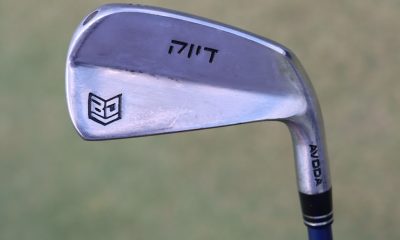

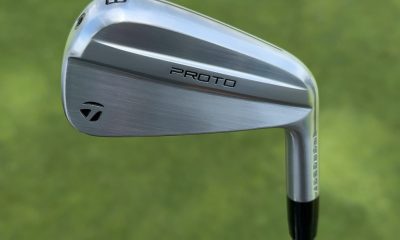

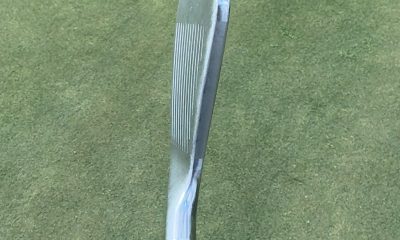

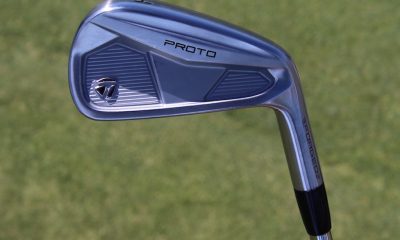



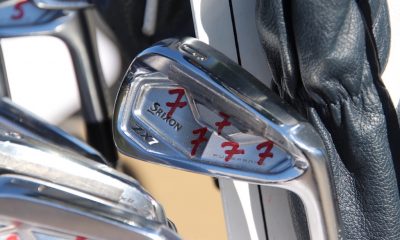









Mccance79
Oct 26, 2014 at 2:09 pm
Great point… I am a low ball hitter looking for more distance especially in my high irons. The concern is that all the fitting carts only have 6 irons and with the gaping on the 3, 4 and 5 irons lonely being 3* I am concerned on irons would react to my adjustments.
Frank Garrett
Dec 11, 2013 at 7:32 pm
Add loft for distance?????? I tried it today but I can still hit my 6i farther than my 64 degree lw…. Guess I don’t get it
mwb
Oct 29, 2013 at 7:16 am
I am purchasing new irons and am seriously considering getting the lofts 2* weak to create a 48* PW and 4* loft spacing. I’m also adding a 5 wood to the bag and changing to a 54/60 wedge set-up.
The new era of stronger lofts is all about how far to hit 7 iron vs how close to hit 7 iron and more accurate. Today’s golf ball travels farther than ever before and I don’t see any need to jack up the short iron lofts. Tiger Woods plays his irons in weaker lofts and he doesn’t seem to have any distance issues!
Freddy V.
Oct 24, 2013 at 11:40 pm
So glad this was posted. “people hit it further because of stronger lofts” is such a wifes tale. Ball speed from the new irons is what is creating the distance. With added ball speed comes more launch. Loft is used to get the irons back to the proper launch window…
Rick Zarlengo
Oct 21, 2013 at 3:30 pm
What I haven’t seen mentioned is that iron shafts have changed a great deal and offer more low kick (higher launch/spin) options to be able to match with those lofts. It is a combination of those factors to get consistent results.
Thankfully gone are the days of everyone demanding s300 S or X when they don’t have the swing speed to support them.
Gio
Oct 21, 2013 at 9:50 am
there comes a time when too much ‘loft jacking’ is too much. I know for people with slower swing speeds these crazy lofted, ultimate SGI irons are perfect. for the ‘better’ golfer, these lofts leave nothing at the bottom of the bag. (others have mentioned) I went to GG with my pops and hit the speedblade 9i for sheets and was hitting them 165-170…why? i don’t need that. traditional lofts ftw (let the ‘technology’ be what determines added length/distance, not loft changes)
Freddy V.
Oct 24, 2013 at 11:42 pm
Its ball speed not loft that is increasing distance. Guaranteed that if you looked at your ball speed it was dramatically higher.
SV
Oct 19, 2013 at 3:58 pm
I am in favor of weaker lofts. I don’t pretend to be an expert, or even close. But, as lofts are strengthened the gaps become compressed on the long end and widened on the short. When you get 2* gaps on the long end there is almost no difference between clubs. On the short end, as the pitching wedge loft gets stronger you end up with wider gaps in the scoring clubs. If this continues we’ll end up with 25* 7 irons and carry 6 or 7 “gap” wedges.
After this long introduction, Nick keep preaching this gospel. Maybe manufacturers will take note (I doubt it, but keep trying.
Phil E
Oct 18, 2013 at 10:45 am
Not a dispute with the OP, maybe even validation, but what about head style?
In my experience I have seen guys in the 8-14 handicap range with moderate ball speed try X Hot irons, and see much better results with the Rocketbladez. Typical launch angle would improve from 13-14* to 17-18*. In turn creating around 12 more yds. of distance, and more playable iron trajectories.
Idk CG specifics on those models, but I have seen similar results with I20, and G25.
Nick Morrow
Oct 18, 2013 at 1:11 pm
I completely agree Phil E.
It is amazing how much higher/lower similar irons can perform, in terms of player level. And you are right about the irons listed, X Hot is a shockingly low launching iron and the G25 would be the exact opposite, with Rocketbladez mixed in the middle. We have seen significant distance improvements with all 3 of these irons, it just needs to match up with how you launch the ball. That is why getting the numbers is so important.
Zachary Yaz
Oct 18, 2013 at 9:13 am
Thank you for such an eye opening article. Will keep that in mind from now on
8thehardway
Oct 18, 2013 at 8:38 am
“It is hard for some golfers to understand how irons with more loft can help them hit the ball farther,”
Maybe it’s conceptually challenging but when all sets came 3-PW with heads the size of your pinky-toe, golfers either left their 3 iron home or just used it for low punch shots back to the fairway; back then, a well-hit 6 iron would outdistance an over-muscled 3 iron seven times out of 10. If experience still trumps explanations, simulations and printouts, print out some ebay listings – there are lots of older sets with ‘barely used’ 3 irons.
Craig
Oct 18, 2013 at 8:12 am
Hi Nick,
I know its different for each golfer depending on their individual characteristics but do you have rough numbers (for iron set) to be looking for in terms of launch angle, spin rate etc. I am 2 handicap, playing Scottish Links golf, smooth tempo, 80-90mph, pretty straight flight, shallow divot.
Cheers
Nick Morrow
Oct 18, 2013 at 9:51 am
Craig,
Good question. Assuming you are not altering the trajectory due to the conditions. An ideal Launch Angle and Spin Rate for a Ball Speed with a 6 iron of 115 MPH would be right about 15-16* and 6000 RPM’s respectively.
If your Ball Speed was higher than that, say up to 125, which is a few MPH slower than PGA Tour average, you would want spin to stay within 200-300 RPM’s higher, and Launch Angle to come down to about 14*. And the opposite is true as the speed drops.
Jeff
Oct 21, 2013 at 2:57 pm
So what makes 15-16° and 6000 RPM “ideal”? Does that create the maximum distance for that ball speed? What if I get those numbers with a 7-iron, or a 5-iron? Would they still be “ideal”?
Nick Morrow
Oct 21, 2013 at 6:06 pm
Yes for that particular Ball Speed, the ball can not carry any further with a better stopping power than with those conditions. If you want to simply hit the ball further, find an iron that launches really high and spins really low, you will knuckle ball the shot a long ways, but odds are you will not be able to control yardages or stop the ball under most conditions.
I am not sure exactly what you are asking with the final 2 questions, are you asking should the 5 and 7 iron have the same launch conditions as the 6 iron, or would there be any issues if your 5 iron or the 7 iron launched like the “ideal” conditions for the 6 iron?
Jeff
Oct 28, 2013 at 6:11 pm
Yes, that’s essentially what I’m asking. I know some pros naturally hit it higher, and some lower. Some get more spin, some less. I realize this can be affected by angle of attack, swing speed, iron/shaft design, and ball design. But if a “high spin” player gets a 15° launch and 6000 RPM with a 115 MPH ball speed with a 5-iron, then what’s wrong with that? If the launch conditions work, what matter the number on the club? Surely getting consistent results and regular yardage gaps between clubs is more important than shooting for some “ideal” stats that may go against your natural swing? Some people prefer a higher or lower, high- or low-spin ball flight for strategic purposes. Or if you’re playing in firm conditions, you might want more spin and a higher launch. The idea of one ideal spin rate and launch angle for each iron doesn’t really make sense to me.
As far as lofts for amateurs go, I feel like long irons have to little difference between them. Since such a precise hit is needed to take advantage of the lower loft, the “average” distance each club hits the ball tends to converge at lower lofts for less-skilled players. Including me. I have a 17-degree 4-wood, a 21-degree hybrid, a 26-degree hybrid, and a 29-degree iron as my longer (non-driver) clubs. This also gives me room for more wedges.
yo!
Oct 17, 2013 at 5:46 pm
For you lower swing speed players, go to blades with weaker lofts or better yet go to an old vintage blades with the pitching wedge 52 degrees, and you can hit the ball farther … hehe.
kloyd0306
Oct 17, 2013 at 4:50 pm
The industry is run by marketing divisions, who are responsible for stronger lofted irons, in the mistaken belief that lower loft equals more distance. The fact remains that only stronger, faster swings can support lower lofts.
So, I am now waiting for a major brand to market and advertise that their new, weaker lofts will add distance for most golfers.
I suspect I’ll be waiting a very long time………
mitch
Oct 17, 2013 at 4:29 pm
Amen, finally some one with great insight. Like most things in life, the real answer is “it all depends”, golf is probably the only sport where they use generalization to describe something that is quite complicated. examples, keep you head down, hit down on the ball, you gotta swing inside out…
mr_divots
Oct 17, 2013 at 3:16 pm
Good info to pass along regarding COG. Seems that the article could have suggested that for higher swing speed players, the stronger lofts and COG location is necessary to not have the ball shoot straight up. The new grooves should also be mentioned as allowing the ball to slide up the face a little more compared to the older grooves.
Another point regarding GI/SGI clubs that I would love to see a fitter touch on is shaft length. Routinely, I notice longer than standard 85g shafts with these sets. Perhaps the lighter weight is good, but how many people fit into these longer lengths? I’m 6’2″ and most GI clubs are too long even for me in their stock iteration with this “progressive” shaft lengths concept. The “lightweight speed” designs don’t seem to help the everyday golfer from the examples I see out on the course. That said, people will usually launch clubs higher with a longer shaft length as well, (mechanical advantage/physics) so again, it kind of goes hand in hand with the stronger lofts.
Nick Morrow
Oct 17, 2013 at 4:41 pm
Mr Divots, good point on the higher swing speeds, but like anything else we still see higher speed guys still launch the ball too low, it just is not as common as the low swing speed player.
I am glad you mentioned shaft length, static lengths for GI clubs, how it impacts flight, etc. These are topics that have been kicked around and that are important in today’s market, so articles will most likely be touching on them in the future.
Thank you for the comment and ideas.
Joe Golfer
Oct 18, 2013 at 5:50 am
Good point.
Plus, those superlight steel shafts in the 85-90 gram range feel like a softer flex than what is listed, probably due to the thinner steel in the shaft.
KBS even notes it in the swing speed recommendations for their different model shafts, as their very lightweight steel shafts are about a full flex softer frequency than the standard weight counterpart.
Drew
Oct 17, 2013 at 1:12 pm
But what I don’t understand is why you would need to weaken the loft of irons 2-3* when the gap between irons is 3-4*. Say you have a modern set that is 3-PW, 19*-45*. Why would you weaken the lofts of every club and increase the bounce angle by a proportionate amount if you could just get rid of the 3 iron and add a gap wedge? That’s basically what companies are doing anyway. 4-AW with juiced lofts is the same set as an old 3-PW that would probably be 22*-48*. If the customer can’t get the 4 iron in the air, pull that too and give them a hybrid that will get in the air. Weakening lofts makes zero sense to me. On a driver? Sure. But I’m not sure what’s being accomplished with weakening irons. Even if you want to say a weakened 4 iron is longer in length than a 5 iron of the same loft and therefore goes farther, your gaps in your set will still be equally proportionate. You get to replace the 4 iron that’s gone with something you can get in the air. It’s like that distance is just not filled. There only seems to be one logical reason to do this and that’s just in the odd situation where someone needs more bounce.
Nick Morrow
Oct 17, 2013 at 2:57 pm
I do not disagree with you on the long irons Drew, we have hybrids to replace those. But what about the mid and low irons, yes I understand some companies make 6/7 hybrids (7 and up is very rare), but you can not really replace an 8 iron with a true hybrid. So to get the most performance out of each iron, for these low ball hitters, we need to add loft. And yes it is common to not have an iron longer than 6 or 5 for some of these guys because they carry them all the same distance, and then hybrids come into play. We also see these players having gapping issues with a mid iron, not just 4 and 5 like your example, so adding loft achieves better gapping as well.
Drew
Oct 17, 2013 at 3:02 pm
Well gee, I guess if you can’t get a 7 iron in the air, you really do need some help haha.
Conrad
Oct 17, 2013 at 1:10 pm
well unfortunately people buy clubs based on their ego and the club manufactures feed it. Everyone tries to boast yardage, not consistency and accuracy. most amateurs like to hit the long ball not the low score.
chris Steele
Oct 17, 2013 at 11:49 am
Bravo, As a club fitter who deals with players that purchase equipment based on what their ego tells them they need verses the facts this is a breath of fresh air!
AJ Jensen
Oct 17, 2013 at 11:17 am
OK, quick question. I’m contemplating a set of Mizuno MP-53 irons. Currently I play a set of old-school Ping Eye 2’s, which I love, but I want the benefits of modern irons and forged heads. I know my distances with the Ping set too well and I don’t want to go through a whole season of trial-and-error with new irons, so would it make sense to have my new Mizuno irons bent to the old Ping specs?
Drew Farron
Oct 17, 2013 at 10:01 am
Brilliant information ! More is not always better, but I would expect nothing less from a fitter at Carl’s Golfland…
Ryan
Oct 17, 2013 at 6:17 am
About time someone who knows what they’re talking about said what the the real deal is with loft and modern clubs. LOWER COG IN NEW IRONS REQUIRES LESS LOFT A LOT OF THE TIME TO GET THE SAME DISTANCE OF OLDER CLUBS WITH A HIGHER COG. The golfwrx wannabe touring pro’s will argue otherwise..
Mikko U
Oct 17, 2013 at 5:34 am
After reading the headline I was expecting a slightly different subject discussed but this topic is something I’ve been wondering about myself.
The GI/SGI clubs are basically directed to help players with lesser abilities to hit the golf ball, usually that also means lower swing speeds. They’re selling the clubs by saying that you will hit them longer, yet like you said, many of those who’d need the help aren’t really hitting at least the longer irons any longer.
What I was hoping from this article was proof for that a current 46* MB/CB PW doesn’t go any further than the 47/48* PWs of the past. I guess I’ll need to have my next irons bent weaker leaving some marks on the blade and hosel.
birly-shirly
Oct 17, 2013 at 5:12 am
Nick – so, how much difference can CoG location make to the “optimum” loft?
Say you start with a classic blade 7 iron with 40* static loft – by how much could you reduce the loft in conjunction with a GI head design without launching the ball lower?
Pete Farner
Oct 17, 2013 at 11:06 am
That would depend on what GI head design you have and to be quite honest the only way to be sure would be to test these irons on a golf radar. Each player is different and because of this each iron plays different for each player.
KK
Oct 17, 2013 at 1:21 am
It’s not about research or information, it’s about ego and emotion. Humans think they’re logical but when it comes down to it (when the wallet hits the counter), they are controlled by feelings, who they wish they could play like and what company has qualities that match their identity. As club fitters, you have to find the balance between measurable results and what the customer THINKS is happening. Good luck!
Pooch
Oct 17, 2013 at 12:07 am
Great article. I am a club fitter also and see this every day. I have to explain that the design allows the iron to have a stronger loft. What still kills me are the guys coming in and demanding a lower lofted driver thinking it will give them more distance. I even fitted a customer with a new SLDR and put him in a 12 degree head with a TP shaft. I showed him all the stats on the monitor and he was in agreement but when it came to buying the actual driver he insisted on buying the 9.5 head with the TP after all the work on the launch monitor. I truly wish customers would do their do diligence before getting fit.
Chris
Oct 16, 2013 at 11:53 pm
I completely agree with this! I just switched from Wilson Ci9 to Taylormade TP MC, and I’ve gained almost 15 yards despite the lofts being higher. Great article!
craig@tourimpactgolf.com
Oct 18, 2013 at 8:44 am
Yup…been there done that. Agreed.